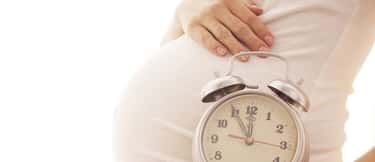Middle age pregnancy

There is a growing trend of middle–aged women given birth successfully. A 2013 report from the Centers for Disease Control found that although birth rates of women turns down when they are in their 20s, the birth rate of women aged 30 and above was increased. It was also found that starting from the year, 1997, the birth rate of women aged 50 and above also increased. The major reason for these successes recorded is the growing enhancement in the available fertility therapies available.
The reality about having a child at middle age
There is definitely a lot of ethical concern regarding having a child at middle age. A good number of people worry about the age difference between the children and their mum and worry, that the child may not have grown enough to be independent when the mother is aged. However, Dr. Joanne Stone, director of fetal medicine at New York's Mount Sinai Hospital, noted that things are beginning to change.
She stated that women’s life expectancy has changed and the implications of this can never be full known and said that a woman could have a baby at 30 and suffer from cancer. But if the woman is healthy and have a great life expectancy, irrespective of the age when she has the child, she can raise the child to a good age.
The Reality of Middle–Aged Pregnancy
A number of studies carried out to ascertain the effects of delaying marriage till the middle age calls for a lot of concern though. This is particularly so for middle-aged who have less life expectancy and whose biological clock is weakening in spite of the currently available technological advances in medicine. There is increasing evidence regarding the decline of the quality of eggs of a woman as she ages.
Irrespective of the improvement in medical science, it is common to face some difficulties with conception particularly women who have had abortions and women who have scars in their tubes due to infections.
Success stories
Fertility treatments have helped a lot of middle aged women to achieve pregnancy but they can be expensive and as well have their own upheavals.
Increasing numbers of women especially married women are currently giving birth to their first child after 35 years of age. A research analysis of twenty years of mother to child data from a number of seventy-nine million birth certificates shows a few noteworthy facts about middle-aged pregnancy.
From 1985 to 2004, the rate of married women who gave birth to their first child at ages 35 and older increased from 3.4 % to 12.2 %. Among these births, the rate of multiple births rose from 1.5 % to 5.7%.
On the other hands the numbers of multiple births that occurred between married women who are 20 to 34 years old were smaller than that of women who are 35 years old and more. Thus, the rate of married women who have first plural births from 35-year-old and above increased by 1.3 times more than the rate of married women aged twenty to thirty-four years.
Complications and neonatal mortality concerns
Women who plan to have middle-aged pregnancy need to be fully informed of the risk involved including the possibility of giving birth to premature children and children who are underweight and the implications this may have on the burn children both at birth and during their childhood years.
Women who delay marriage and childbirth frequently need to make use of fertility drugs if they want to have children; these treatments regularly boost their possibility of having multiple births. However, good numbers of these births results to low-birth-weight babies.
The weight of the newborn is a significant factor that determines predictor his or her future morbidity and death rate. Very low-birth-rate infants 100 times higher risk of dying in their first year of life compared to normal weight infants while the risk for MLBW or moderately low-birth-weight infants is over five percent more than normal birth weight infants.
Also, a pregnancy at 35 year and more is at higher risk of giving birth to low birth-weight infants than women between the ages of 20 to 34 years of age.
What medical experts have to say
The number of women giving birth at 40s and 50s of age is growing as revealed by the Centers for Disease Control and Prevention. It was found that in 2007, 105,071 women between the ages of 40 and 44 gave birth and this represented the greatest rate since 1968. It was also recorded that the birth rate of women between 45 year and fifty-four years rose to 7,349 and a five percent increase in only one year.
According to Mark Sauer, MD, chief of reproductive endocrinology at Columbia University Medical Center and a top researcher on middle aged pregnancy, the rate of middle aged pregnancy has risen over the last twenty years as studies have found that older women are capable of carrying pregnancies and giving birth safely.
Laura Riley, MD, a maternal-fetal-medicine specialist at Massachusetts General Hospital and chairwoman of the communications committee of the Society of Maternal-Fetal Medicine stated that a healthy 42-year-old with no medical issues and in good physical condition who gets pregnant naturally is expected to have a great pregnancy as much as a woman who is 10 years younger.
The medical doctor also noted that a good number of women in their mid-40s who conceived through IVF had issues with hypertension are a bit overweight or are prediabetic.